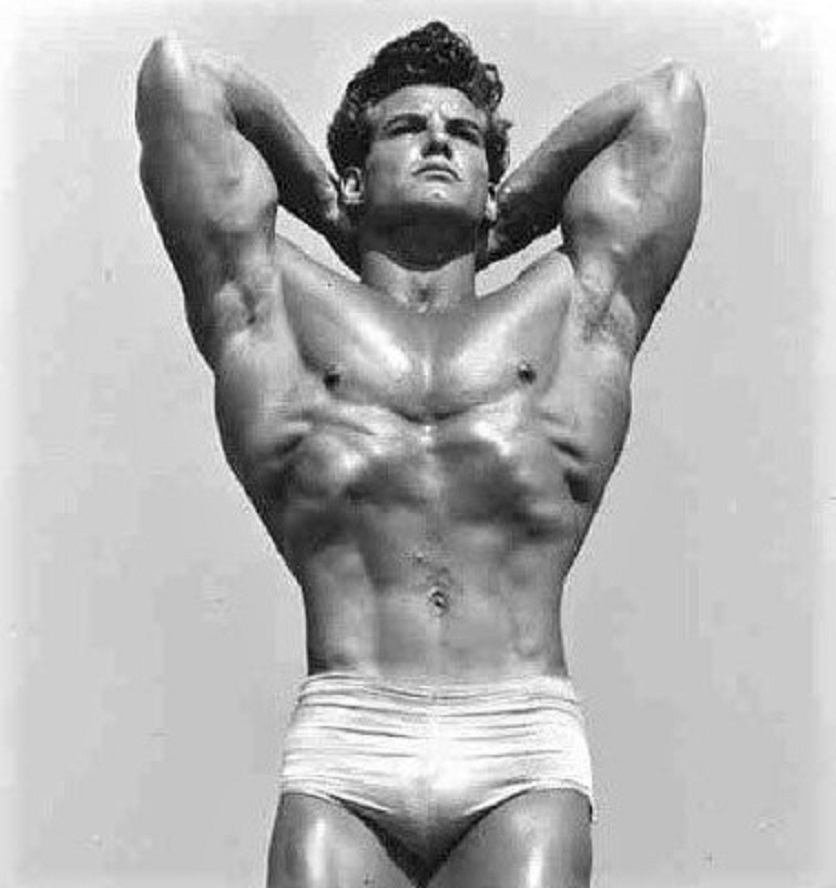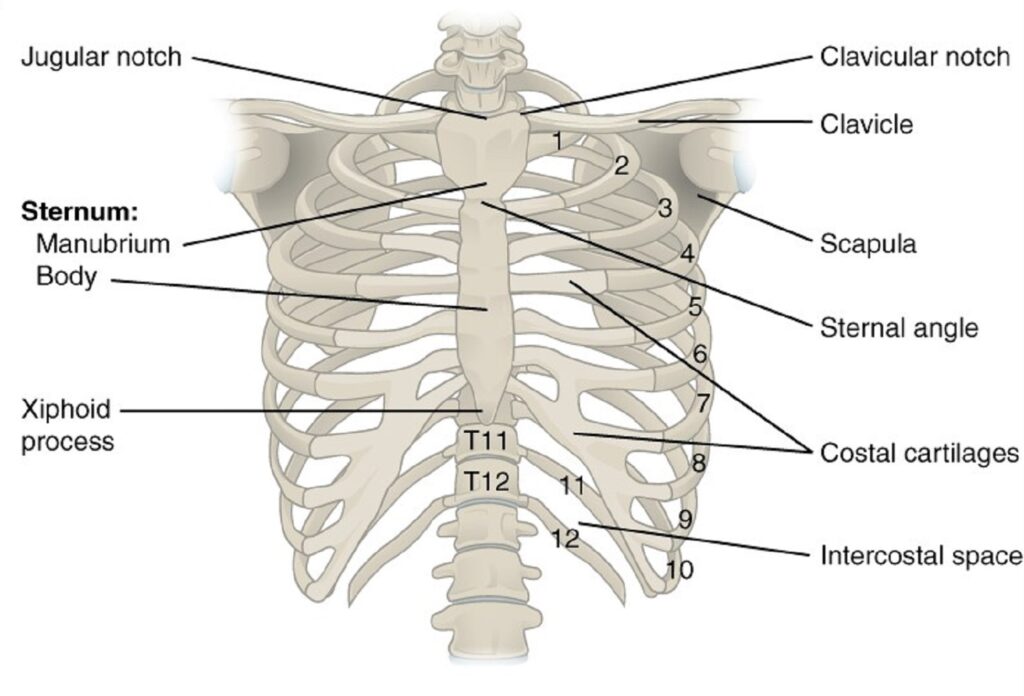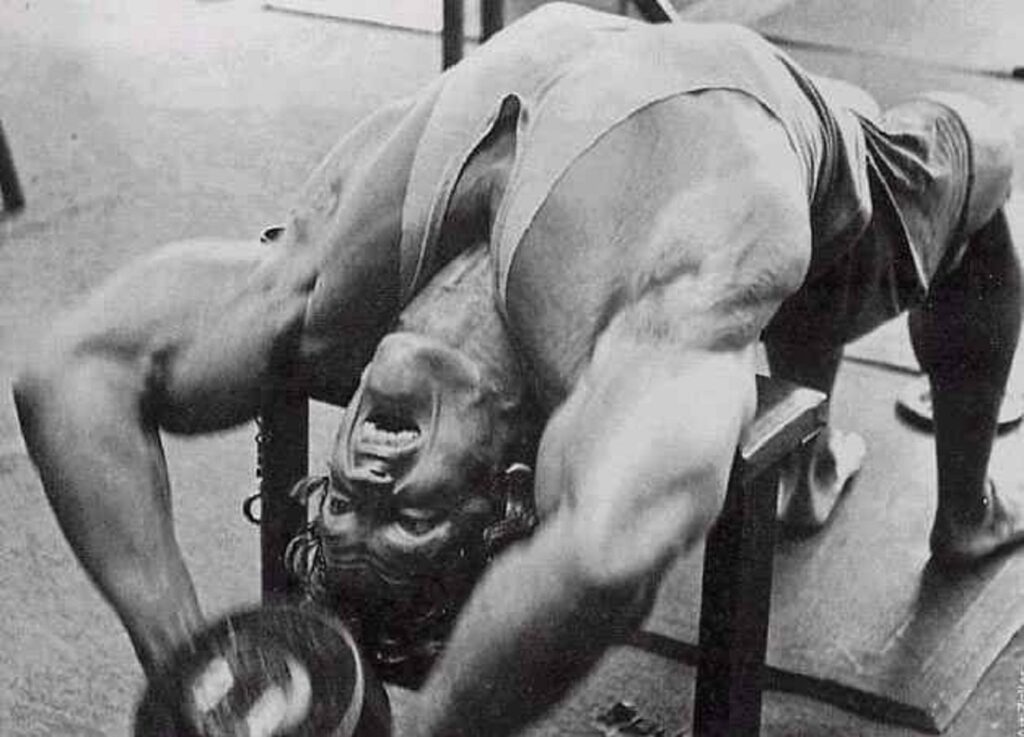Painting of Frank Zane by Thomas Beecham
Rib cage expansion used to be a crucial component of bodybuilding training. The legendary Steve Reeves spent valuable workout time doing exercises which would, supposedly, stretch his rib cartridge, therefore improving his ab vacuum pose and providing a larger silhouette. And just look at Reeves’ structure! Published advice often noted that rib cage expansion training was especially important for teenage bodybuilders, because they could more easily mold their still-pliable skeletons. But, again: used to be. This was “common wisdom” a half-century ago. Are there exercises that can stretch out your rib cartridge? Is rib cage expansion fact or fiction? The Barbell investigates.

WHAT IS THE RIB CAGE?
The rib cage houses and protects the heart, lungs, and major blood vessels, and maintains the shape and stability of the chest cavity. It also helps with the process of breathing by providing support to the lungs and facilitating their expansion during inhalation.

The rib cage consists of the sternum (breastbone), 12 pairs of ribs, and the thoracic vertebrae of the spine. The ribs are curved bones that wrap around the sides of the body, connecting to the spine at the back and the sternum at the front. The top seven pairs are called true ribs because they directly attach to the sternum via cartilage. The next three pairs are known as false ribs because they don’t directly connect to the sternum but instead join together and then connect to the seventh rib. The last two pairs of ribs are floating ribs as they do not attach to the sternum or other ribs. Between ribs are the intercostal muscles, and they move the ribs, lifting and expanding the rib cage during inhalation and lowering and contracting the rib cage during exhalation.
RIB CAGE EXPANSION TRAINING
When we look at Steve Reeves’ training routine, circa 1950, we see that he did something called a “breathing squat” superset with a “breathing pullover.” The former was just a high-rep squat performed with deep breaths, and the latter was just a barbell pullover, performed the same way. The deep-breathing was thought to expand the rib cage from the inside-out, and the pullovers were done to stretch out the rib cage. By the next generation, the deep-breathing was dropped. But bodybuilders still did pullovers primarily to expand their rib cages, supposedly stretching the cartilage.
When you do a dumbbell pullover with your upper back across a bench and your knees low you can indeed feel a great stretch in your rib cage, which is why most bodybuilders did them in their chest routines. That stretch is felt primarily in the serratus (beneath and to the side of the pectorals) and intercostal muscles (between the ribs). The primary muscles targeted during pullovers are the latissimus dorsi (lats) and the serratus.

Whether done with a dumbbell, barbell, or machine, pullovers are a great back exercise. They’re a rare way to isolate the lats, meaning you train your back without working your biceps (as with pulldowns and rows). However, it’s important to note that there is no scientific evidence to support the notion that pullovers can significantly expand the rib cage.

In fact, there is no exercise that expands the rib cage in any significant way. It’s made up of bones and cartilage. Once your bones stop growing, so will your rib cage. Any stretching of the cartilage would be very minor, at best. Your rib cage’s shape and size is determined by genetics.
See also: How to Increase Bone Density
POSTURE AND BREATHING EXERCISES
You can’t actually expand your rib cage. However, you can improve your posture and breathing mechanics, which may give the appearance of a larger chest. Here are some practices that can help improve your posture and promote better breathing:
ELONGATE
Sit and stand tall with your shoulders back, and avoid slouching or hunching forward. Incorporate stretches that target the chest, upper back, and shoulders to improve flexibility and mobility. This can help alleviate any tightness or restrictions that may impact your posture.
DIAPHRAGMATIC BREATHING
Focus on deep breathing that engages your diaphragm. This type of breathing involves expanding the lower abdomen as you inhale, allowing your ribcage to naturally expand and your lungs to fill with air. Doing this can help optimize your breathing mechanics and potentially make your chest appear higher and fuller.
TRAIN YOUR BACK, SHOULDERS, AND CORE
Working these areas can help improve posture and support proper ribcage positioning. And, as we said before, do pullovers, but for back, not chest and certainly not for ribs.

RIB CAGE EXPANSION CONCLUSION
No, you can’t expand your rib cage. Instead, work the muscles around it: back, chest, serratus. Eat right to feed your bones, including ribs. And practice good posture and breathing for your overall health and to make your skeletal structure look its best.
















































